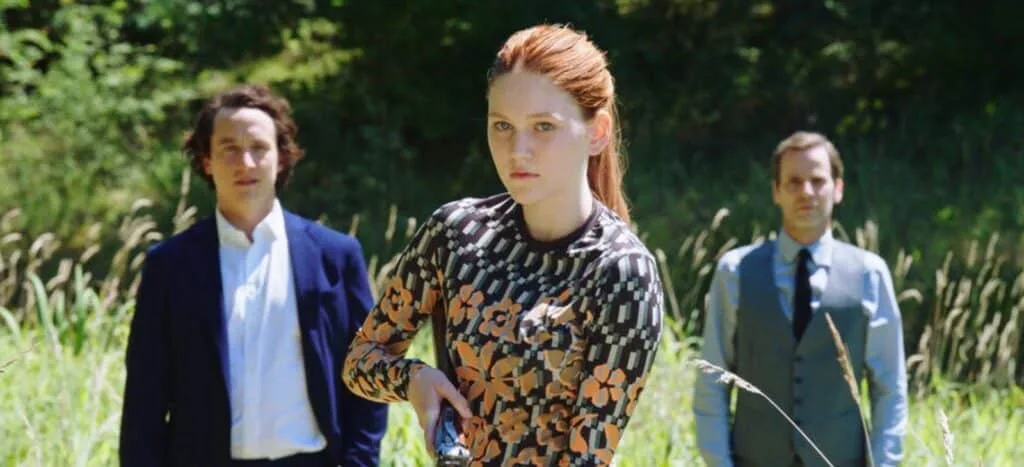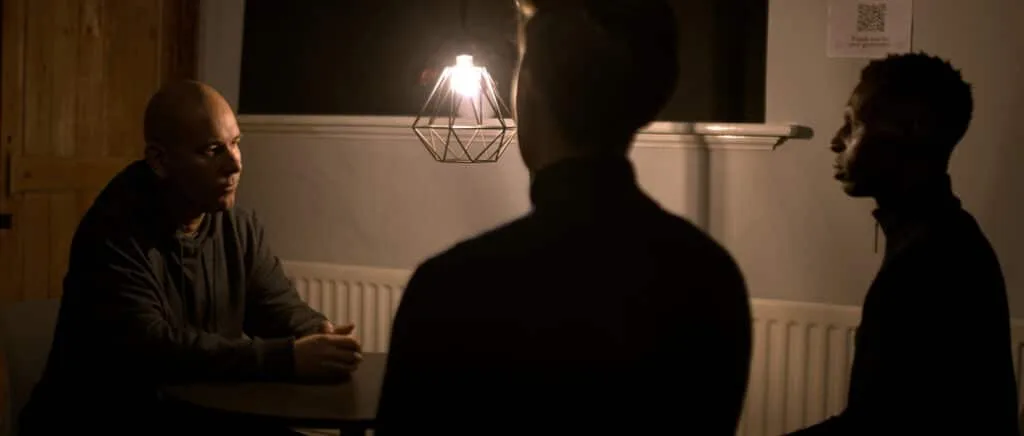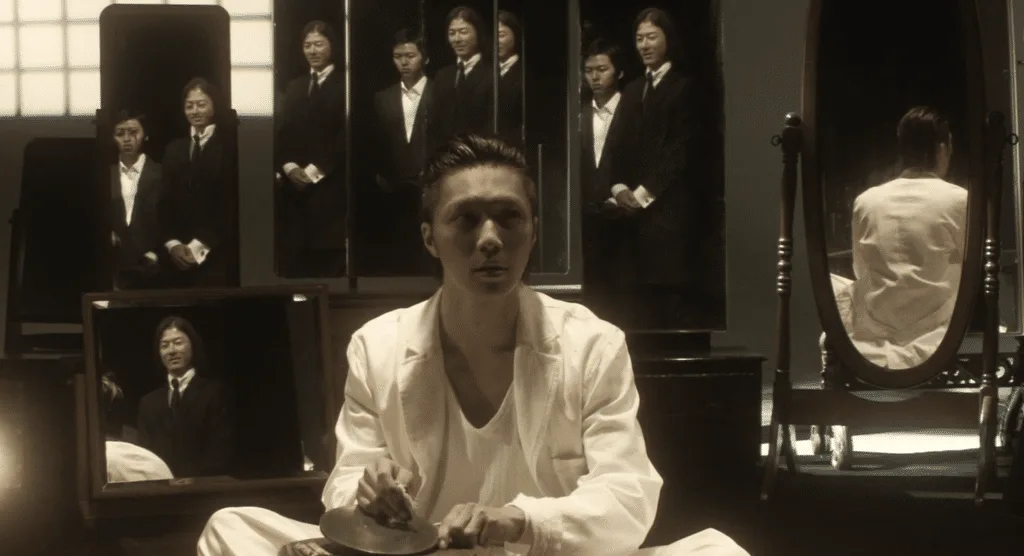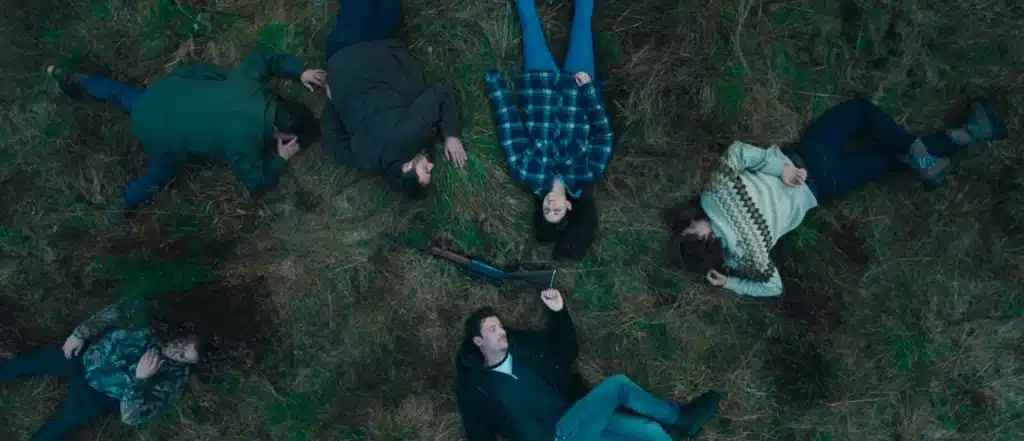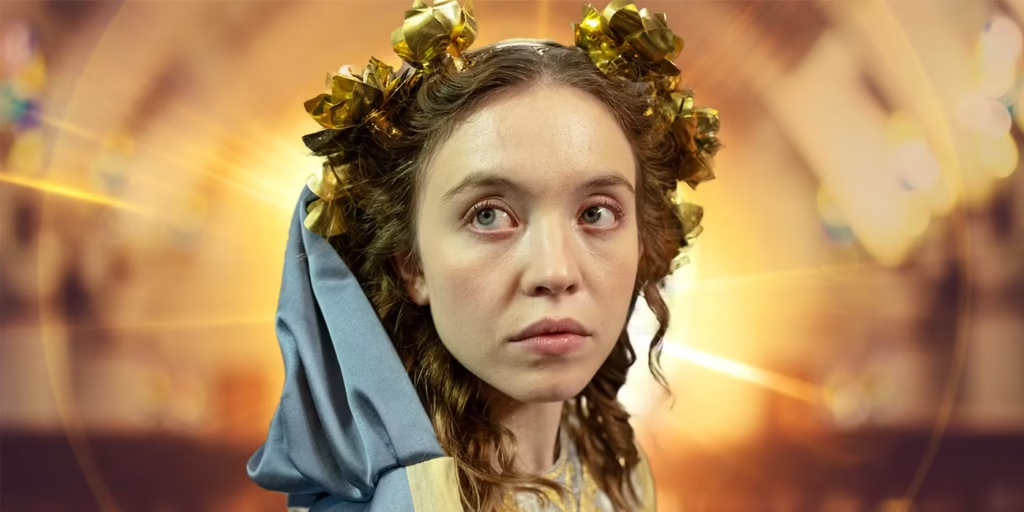
Moon (2024) starts in a cage fighting arena: old favourite Sarah Reisinger (Florentina Holzinger) seems to have unexpectedly lost her spark. Losing the fight seems to mean losing her career, too. The whole faded fighter idea might be a recurring motif in film, but the way it’s handled in Moon is altogether more existential, using moments of terrific stillness and quiet being used to underpin the issues: where can Sarah go from here? What can she do next?
We share in the first of these moments just after the losing fight. Sarah continues training – the film often uses physical activity to represent the desire for control – but the young women she is now working with are uncomfortable with Sarah’s intrusions into their personal space. This is a problem, when you need to punch someone to do your job. She says nothing much, but you can feel Sarah begin to exude disbelief. Her sister is little help in all of this, having a young baby to look after. Sarah is clearly presented as an ill fit in this world.
Things begin to look up when she secures an online interview with a wealthy Jordanian man who’s looking for a martial arts trainer for his three sisters. Abdul (Omar AlMajali) explains that she’d be taking the role for a few months in the first instance, but all expenses would be paid, and the work sounds ideal. Sarah accepts the position, and soon afterwards arrives in Jordan. Her main residence is a luxurious hotel, but the job takes place at the family home, which is a long way outside central Amman. The house is a facsimile of wealth. It looks opulent, but frequent power cuts punctate day-to-day life and most of the house is off-limits to Sarah. This is policed by a bodyguard who clearly distrusts her, but then he seems not to trust the sisters, either. Oh, and Sarah has to sign an NDA. There’s always someone observing, always a protocol to observe.
The three girls, Shaima (Nagham Abu Baker), Nour (Andria Fateh) and Fatima (Celina Sarhan) are initially all for the new routine, but their enthusiasm soon wanes. On the first day of training, they don’t even get through the warm-up. Cue more incredulity from Sarah, for whom this kind of routine is everything; it’s clear to see that the girls live a strange, isolated existence. They are apparently home-schooled, though you’d struggle to find evidence of any tutors visiting the property. Their parents live abroad; there’s no internet and no mobile phones allowed. They like going to the mall – accompanied, of course – but there’s ultimately little for them to do. Perhaps it’s unsurprising that these young women aren’t instantly into their new hobby, but Sarah has to wonder if her presence there doesn’t have some other, as-yet undiscernible purpose. Or, if it’s not just some new sop to throw to three bright but bored teenagers. Perhaps it’s more the latter, on balance, but slowly the girls get closer to Sarah. They allow her to see some of the more unsettling details of their gilded-cage existence (something which I note has angered certain critics, who feel that it’s an unduly negative representation of Arab culture. But within the bounds of possibility, no?)
To return to other criticisms of Moon, the film’s tendency towards more oblique content which eschews conventional narrative has locked out some viewers, leading to suggestions that the film could have given us more closure – answered a few more questions. Yes, this is true, but on reflection, the gaps in the narrative really are the narrative. Its approach might not be for everyone, but the film speaks loudest when it says the least. Sure, some of the quite sudden developments towards the film’s close feel quite jarring, but they don’t ultimately shift the reality for the sisters, or for Sarah herself. Sarah is in many ways as cautious and closed-off as the sisters, especially Nour, who shows more initiative than the other girls but seems worldly enough to have more to fear. Sarah is plausibly physically fit, but in a strange culture she still comes across as vulnerable. She’s an odd figure, being shepherded through a superficially wealthy Islamic nation in her tracksuits and training gear, hair usually screwed back like it’s some sort of armour. It’s a lonely, perplexing new life, and Sarah is always strangely sympathetic as she navigates it in near silence. No one calls her; her attempts to phone home are beset by technical difficulties, or are just plain unwelcome. You could predict all sorts of likely comeuppances for her which do not come to pass, but the tension is still there on the horizon – again, much as it is for the girls themselves.
Ultimately, Moon is about the illusion of power. Its illusory nature allows director and writer Kurdwin Ayub to skirt around the idea of the ‘white saviour’ who arrives in a foreign place and makes waves; really, no one here is as empowered as they like to believe: not Sarah, not even Abdul, who at least initially seems to be cool, calm and in control. Sarah seems to hold fast to her ability to make a difference, however, even when bitter experience should have given her pause for thought, but the film wisely leaves that idea with us, not showing us how it plays out. All in all, this is a subtle, often uncomfortable piece of storytelling. It’s a film about secrecy, silence and image management, and it doesn’t need to wrap things up to point out that stories and journeys are often as imprecise as they are profound.
Moon (2024) will feature as part of this year’s WatchAUT Film Festival in London.


